Experimental Study of Influence of Karst Aquifer on the Law of Water Inrush in Tunnels
Abstract
1. Introduction
2. Experimental Apparatus
2.1. The Purpose of Developing the Test System
- (1)
- Precursor: The test system we developed has a short test cycle, saves manpower and material resources, and can be used for statistical test characteristics. Therefore, according to the working conditions, small-scale simulation tests can be carried out before conducting large-scale model tests. The later tests should be better improved by summarizing the relevant laws and combining numerical tests. Small model tests can be used as pilot tests for large model tests.
- (2)
- Multiple types: The existing water inrush chamber test system was developed for particular working conditions; therefore, it cannot realize the simulation test of many types of water inrush. Our system was developed to simulate various types water inrush, such as cavity water inrush, water inrush from fault, and bursting water of the complete rock body.
- (3)
- Serialization: This test system was designed as an extensible test system, and the inner diameter of the main box can be changed from 30 to 70 cm to accommodate different scale tests.
- (4)
- Visualization: The main box of the test system is made of acrylic glass in order to improve viewing the test process.
2.2. Composition of the Test System
3. Test Materials and Methods
3.1. Test Materials
3.2. Method
4. Results and Discussions
4.1. Failure Mode of the Aquifuge Rock
4.1.1. Water Inrush in the Vault Cavity
4.1.2. Water Inrush of Cavity in Front of the Tunnel Face
4.1.3. Water Inrush of Cavity at the Bottom of Arch
4.2. Variation Regularity of Seepage Pressure in the Aquifuge Rock
4.2.1. Water Inrush in the Vault Cavity
4.2.2. Water Inrush of Cavity in Front of the Tunnel Face
4.2.3. Water Inrush of Cavity at the Bottom of Arch
5. Conclusions
Author Contributions
Funding
Conflicts of Interest
References
- Liu, Z.J.; Huang, Y.; Zhou, D.; Ge, H. Analysis of External Water Pressure for a Tunnel in Fractured Rocks. Geofluids 2017. [Google Scholar] [CrossRef]
- Ma, D.; Miao, X.X.; Chen, Z.Q.; Mao, X.B. Erratum to: Experimental investigation of seepage properties of fractured rocks under different confining pressures. Rock Mech. Rock Eng. 2015, 48, 2183. [Google Scholar] [CrossRef]
- Deng, X.H.; Yuan, D.Y.; Yang, D.S.; Zhang, C.S. Back Analysis of Geomechanical Parameters of Rock Masses Based on Seepage-Stress Coupled Analysis. Math. Probl. Eng. 2017. [Google Scholar] [CrossRef]
- Liu, Q.; Wei, L.; Chen, J.; Luo, Y.; Huang, P.; Wang, H.; Guo, J. Stability Analysis of Water-Resistant Strata in Karst Tunnel Based on Releasable Elastic Strain Energy. Math. Probl. Eng. 2017. [Google Scholar] [CrossRef]
- Hao, Y.Q.; Rong, X.L.; Ma, L.J.; Fan, P.X.; Lu, H. Uncertainty Analysis on Risk Assessment of Water Inrush in Karst Tunnels. Math. Probl. Eng. 2016. [Google Scholar] [CrossRef]
- Wei, W.W.; Chen, D.Z.; Qing, H.R.; Qian, Y.X. Hydrothermal Dissolution of Deeply Buried Cambrian Dolomite Rocks and Porosity Generation: Integrated with Geological Studies and Reactive Transport Modeling in the Tarim Basin, China. Geofluids 2017. [Google Scholar] [CrossRef]
- Xiao, M.; Zhao, C. Stability Analysis of Steel Lining at Pressure Diversion Tunnel Collapse Zone during Operating Period. Math. Probl. Eng. 2017. [Google Scholar] [CrossRef]
- Ahn, C.; Hu, J.W. Experimental Field Tests and Finite Element Analyses for Rock Cracking Using the Expansion of Vermiculite Materials. Adv. Mater. Sci. Eng. 2016. [Google Scholar] [CrossRef]
- Zhang, L.L.; Xia, L.; Yu, Q.C. Determining the REV for Fracture Rock Mass Based on Seepage Theory. Geofluids 2017. [Google Scholar] [CrossRef]
- Sterpi, D.; Cividini, A. A physical and numerical investigation on the stability of shallow tunnels in strain softening media. Rock Mech. Rock Eng. 2004, 37, 277–298. [Google Scholar] [CrossRef]
- Li, S.C.; Liu, H.L.; Li, L.P.; Zhang, Q.Q.; Wang, K.; Wang, K. Large scale three-dimensional seepage analysis model test and numerical simulation research on undersea tunnel. Appl. Ocean Res. 2014, 59, 510–520. [Google Scholar] [CrossRef]
- Liang, D.X.; Jiang, Z.Q.; Zhu, S.Y.; Sun, Q.; Qian, Z.W. Experimental research on water inrush in tunnel construction. Nat. Hazards 2016, 81, 467–480. [Google Scholar] [CrossRef]
- Jiang, H.M.; Li, L.; Rong, X.L.; Wang, M.Y.; Xia, Y.P.; Zhang, Z.C. Model test to investigate waterproof-resistant slab minimum safety thickness for water inrush geohazards. Tunn. Undergr. Space Technol. 2017, 62, 35–42. [Google Scholar] [CrossRef]
- Wang, K.Z.; Li, Z.K. Study on 3D physical model test of seepage of deep-buried long and large diversion tunnel. Chin. J. Rock Mech. Eng. 2009, 28, 725–731. [Google Scholar]
- Pang, Y.H.; Wang, G.F.; Ding, Z.W. Mechanical model of water inrush from coal seam floor based on triaxial seepage experiments. Int. J. Coal Sci. Technol. 2014, 1, 428–433. [Google Scholar] [CrossRef]
- Zhang, S.; Guo, W.; Li, Y.; Sun, W.; Yin, D. Experimental Simulation of Fault Water Inrush Channel Evolution in a Coal Mine Floor. Mine Water Environ. 2017, 36, 443–451. [Google Scholar] [CrossRef]
- Li, S.C.; Zhang, Q.S. Tunnel and Underground Engineering Water Burst Mechanism and Governance; China Communications Press: Beijing, China, 2014; ISBN 978-7-114-11146-4. [Google Scholar]
- Shi, S.S. Study on Seepage Failure Mechanism and Risk Control of Water Inrush Induced by Filled Disaster Structure in Deep-Long Tunnel and Engineering Application. Ph.D. Thesis, Shandong University, Jinan, China, 2014. [Google Scholar]
- Li, S.C.; Yuan, Y.C.; Li, L.P. Water inrush mechanism and minimum safe thickness of rock wall of karst tunnel face under blast excavation. Chin. J. Geotech. Eng. 2015, 37, 313–320. [Google Scholar]
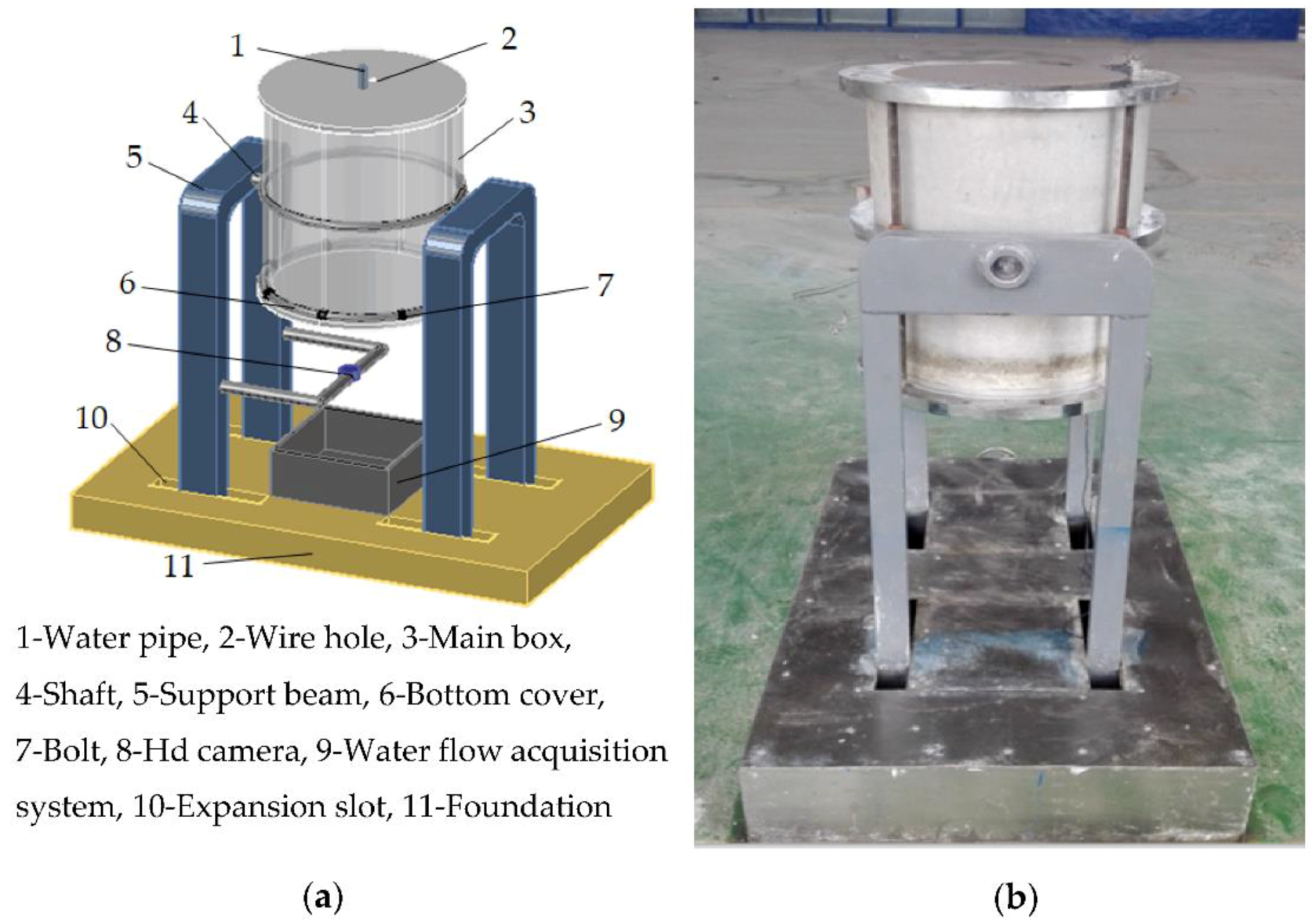
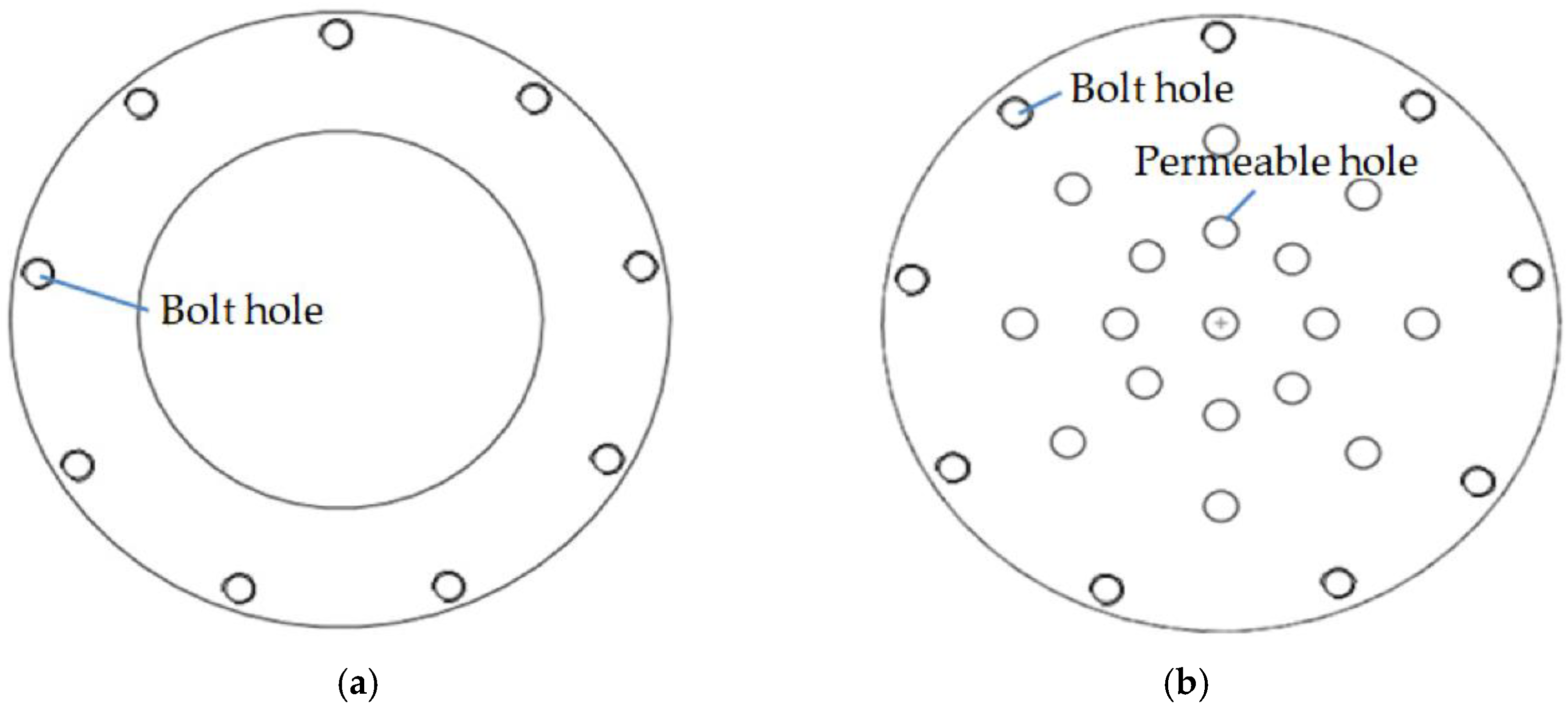
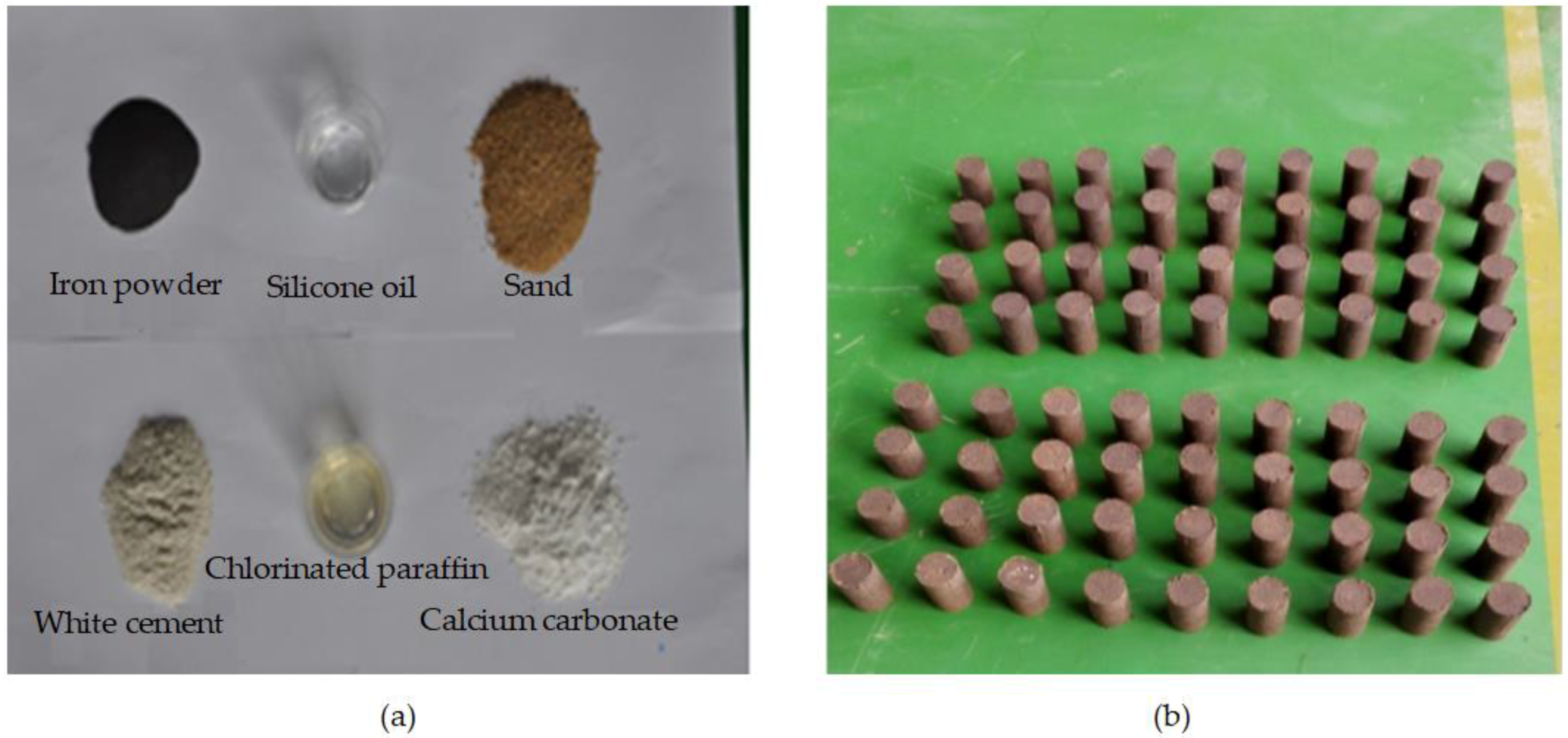
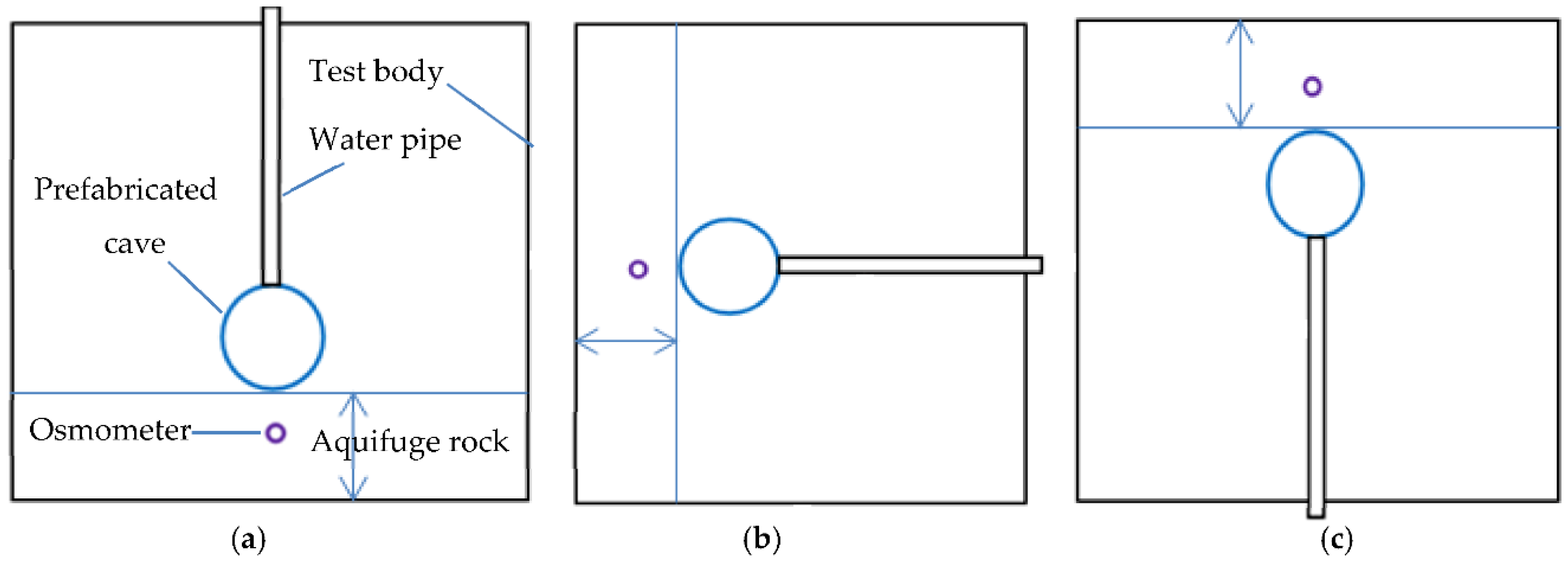
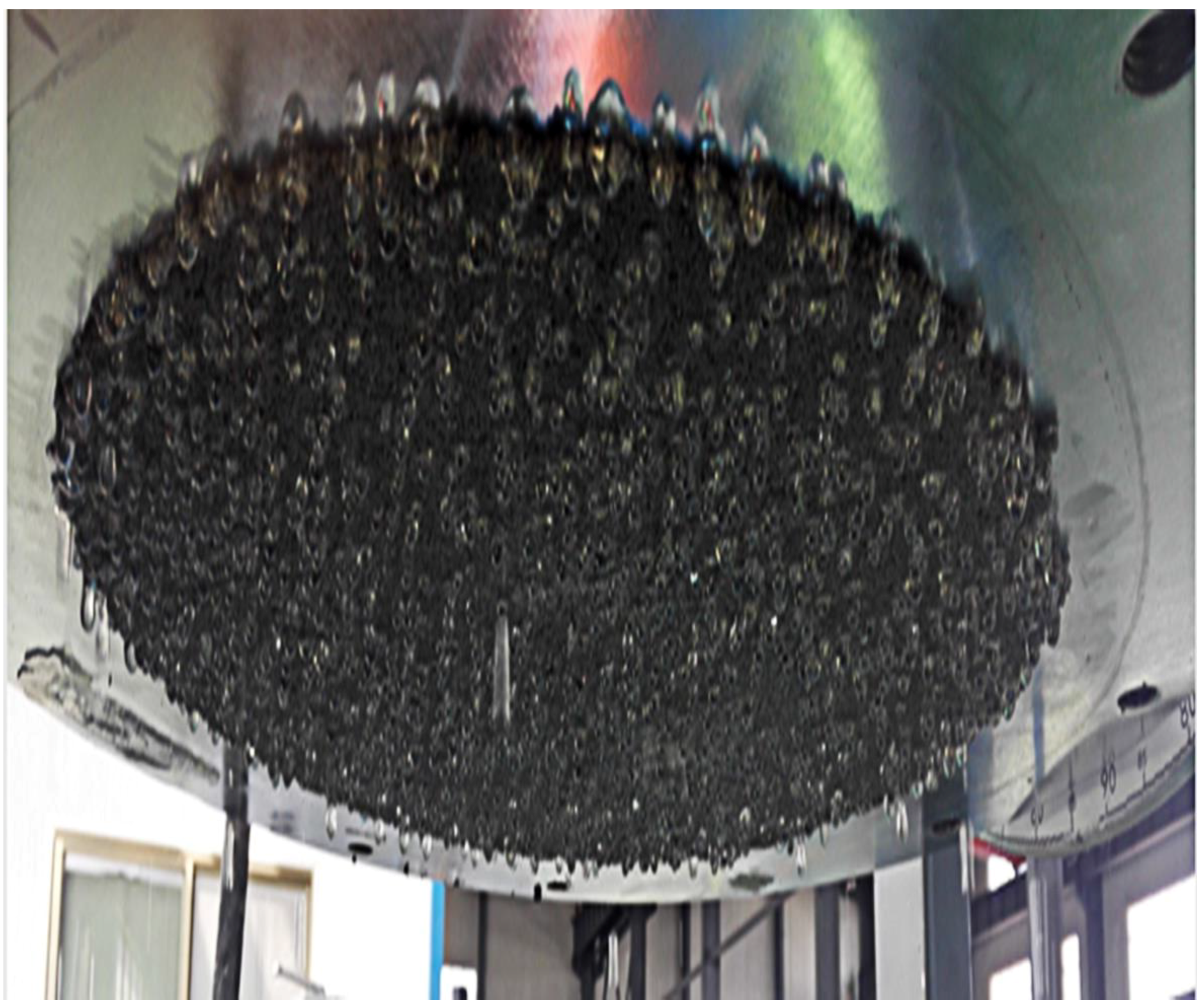
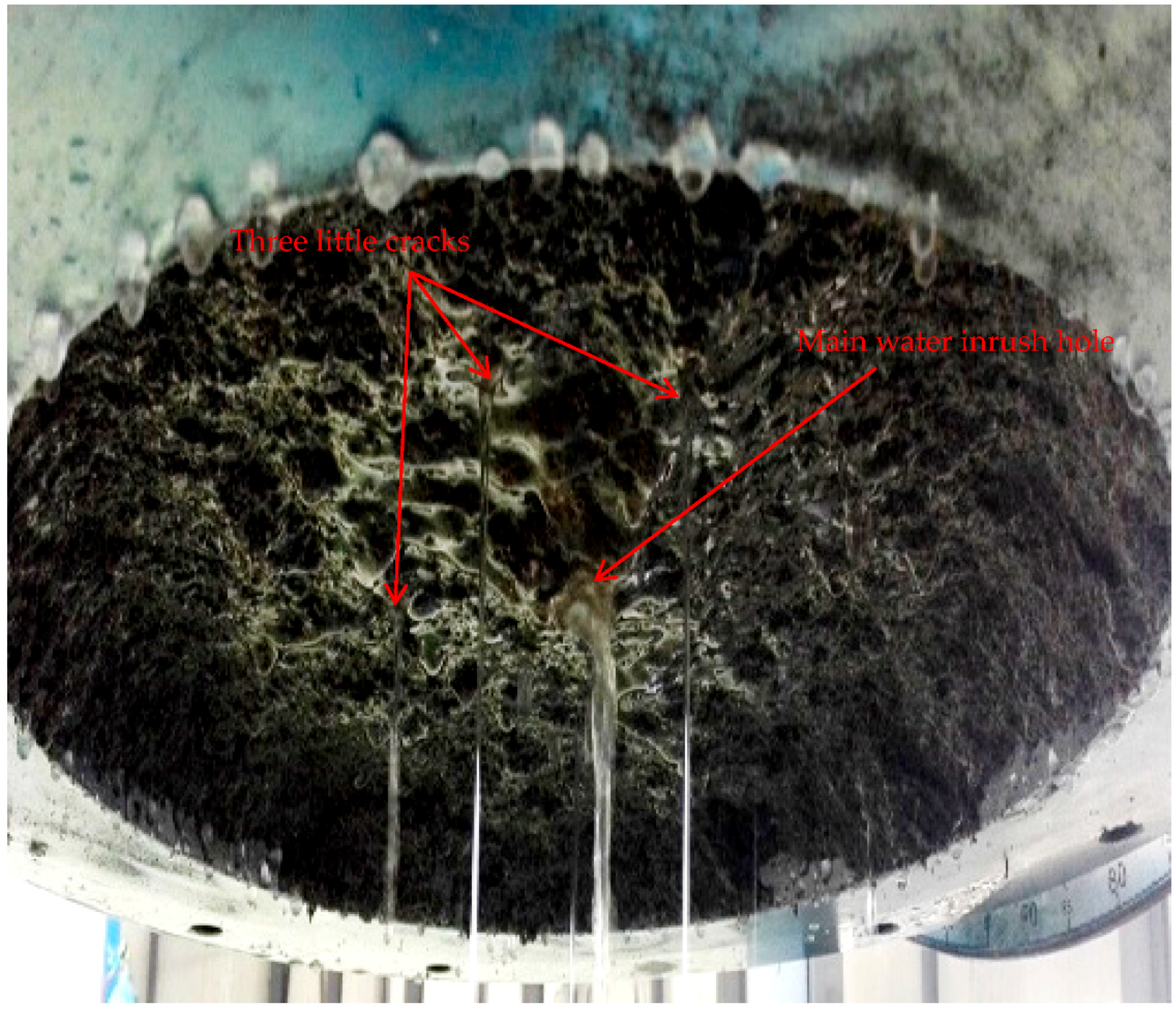
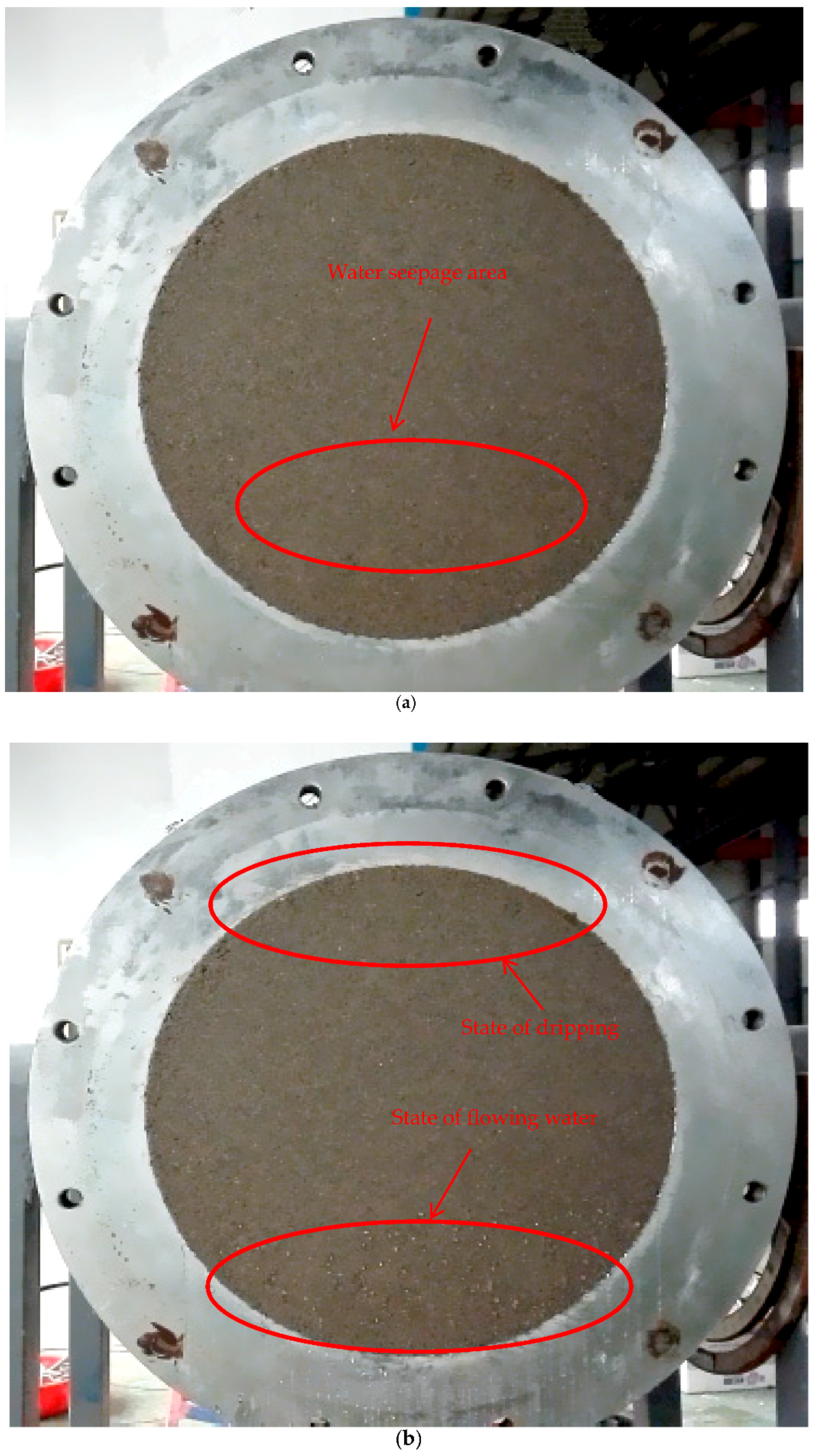
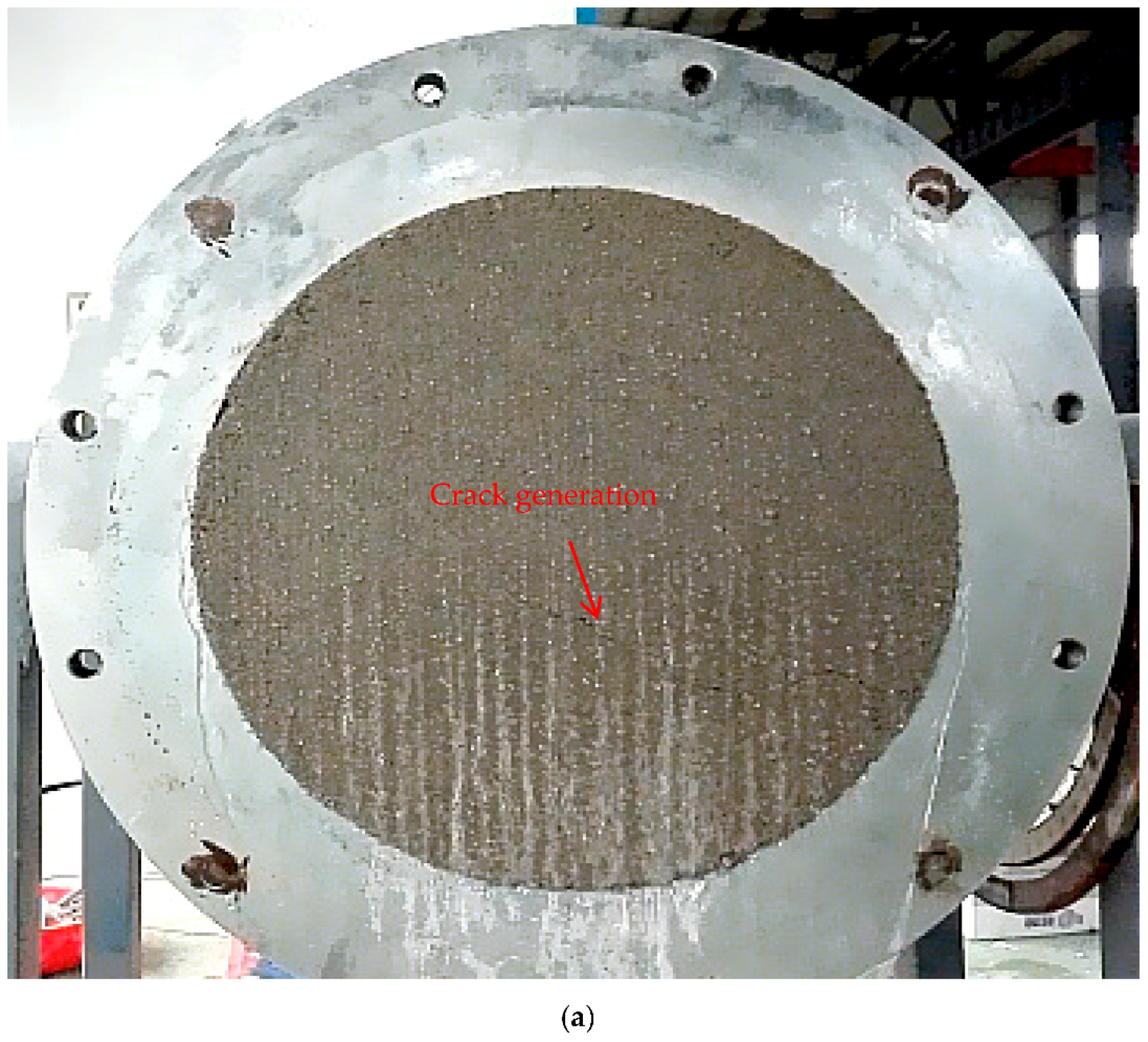
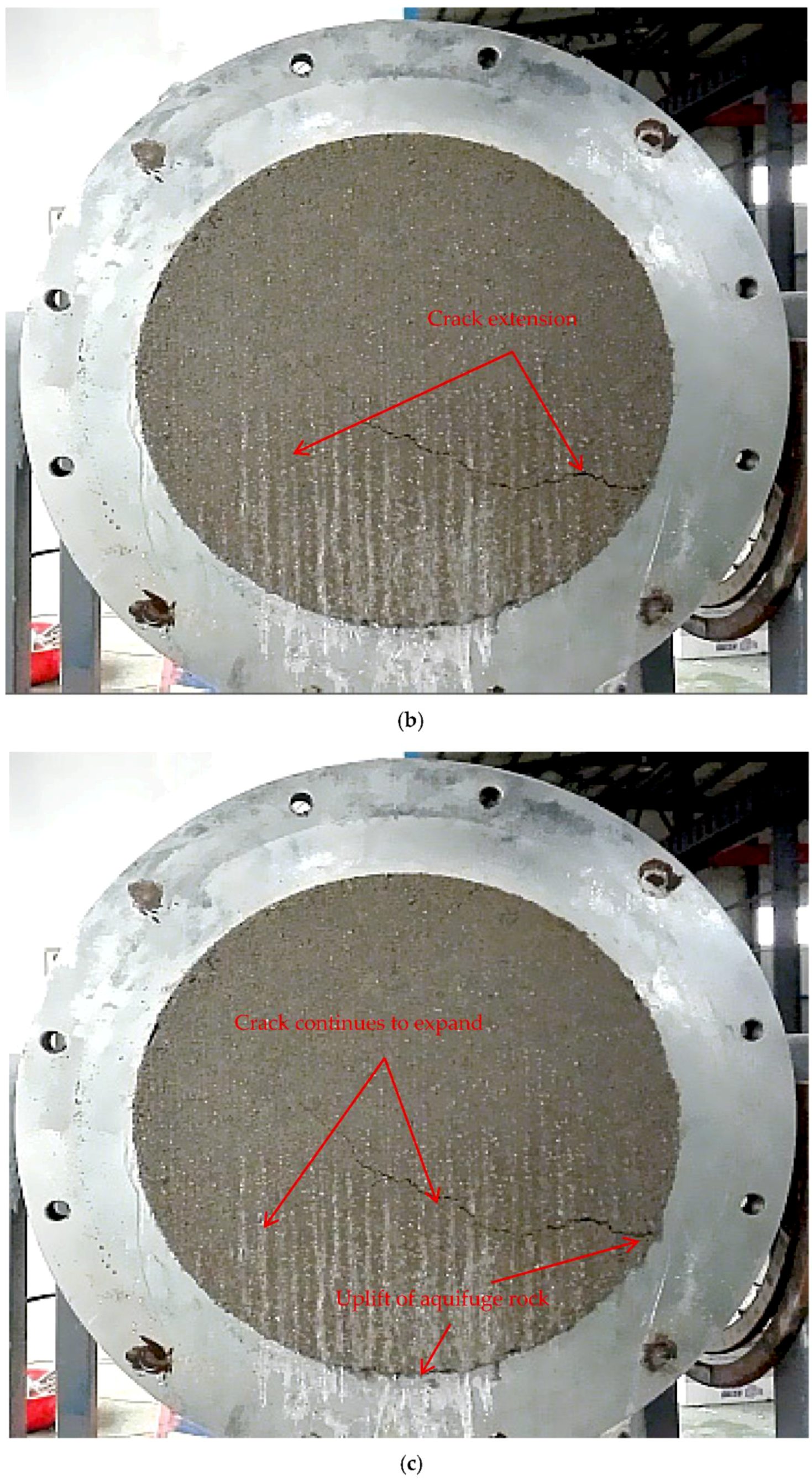
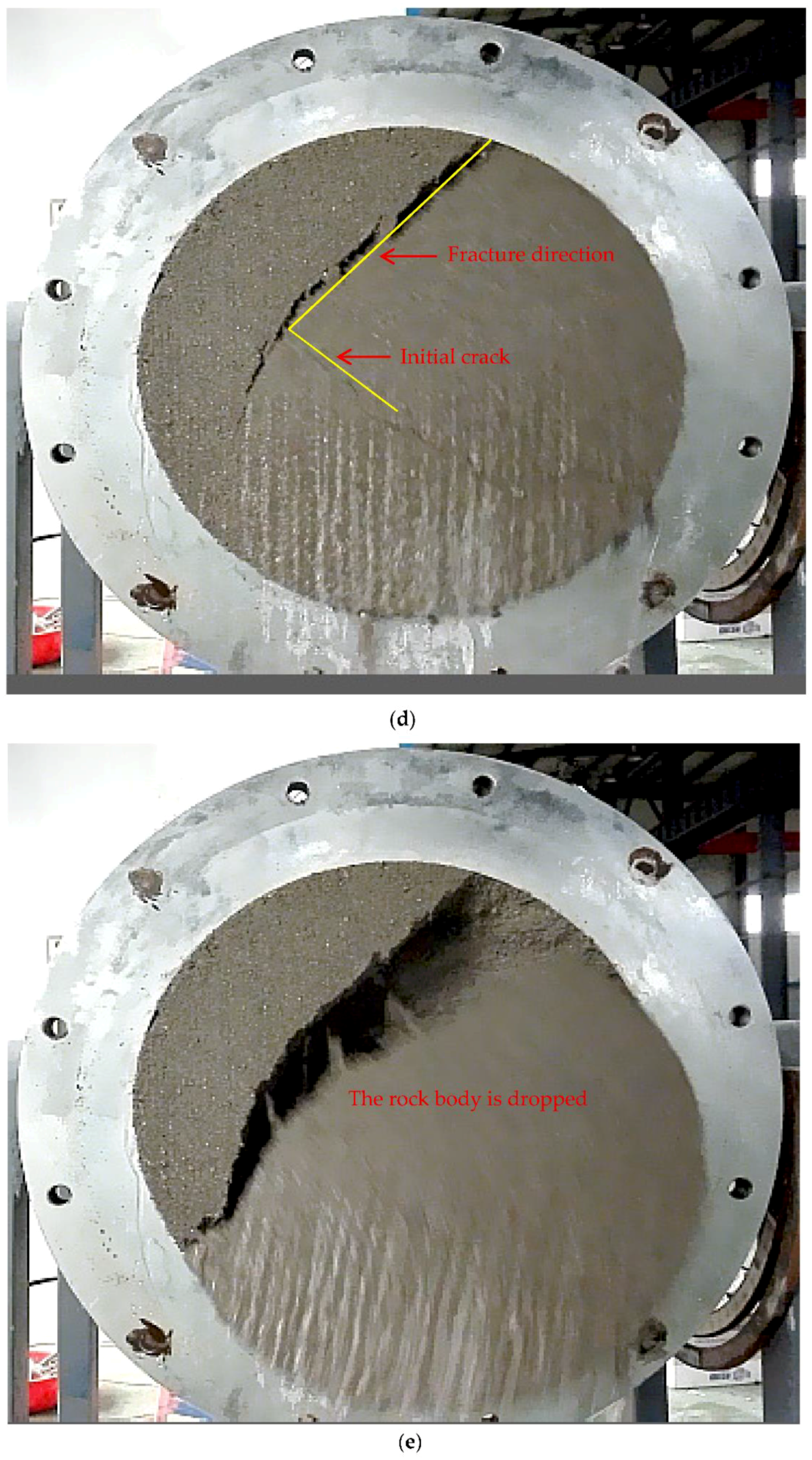

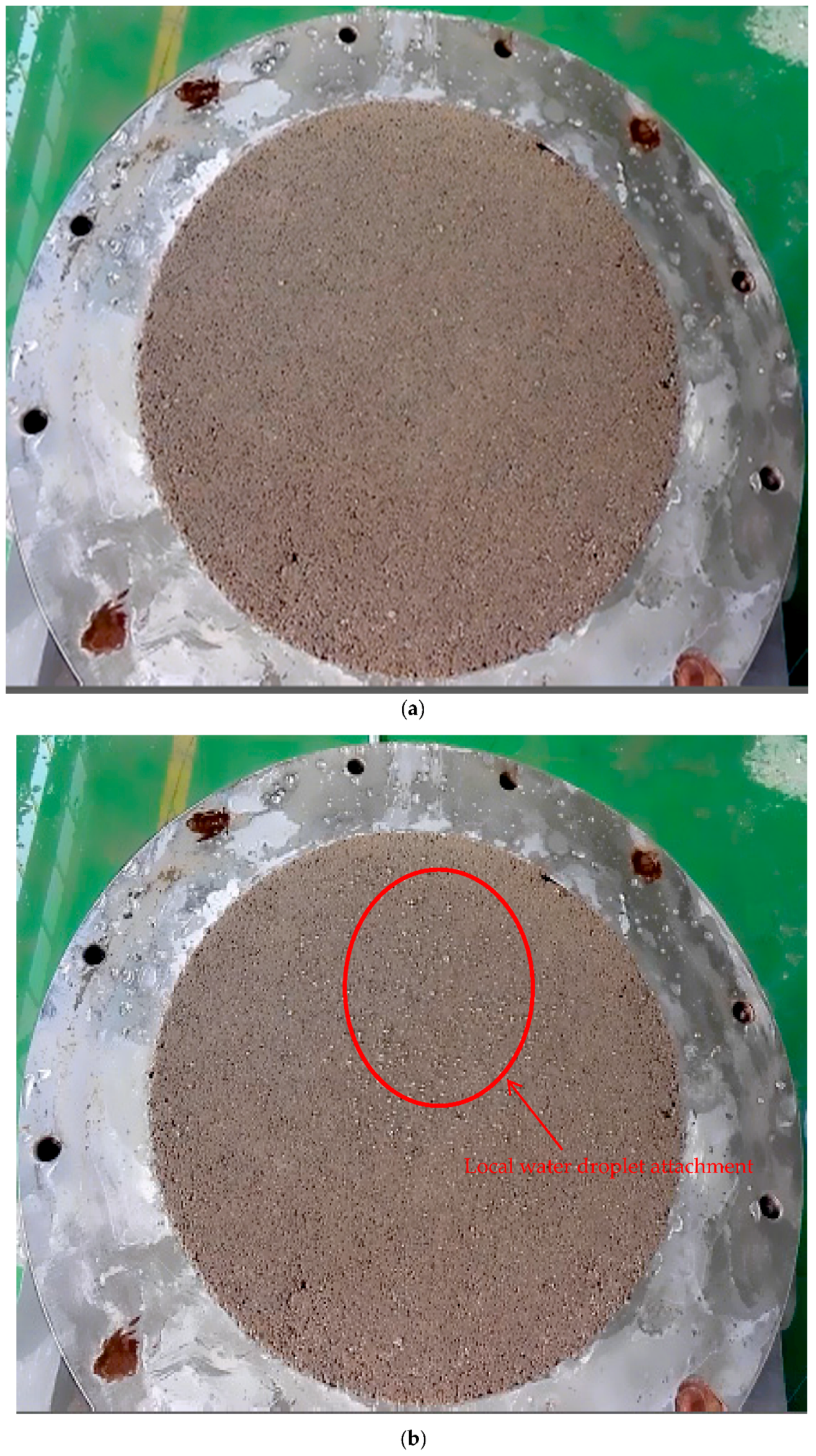
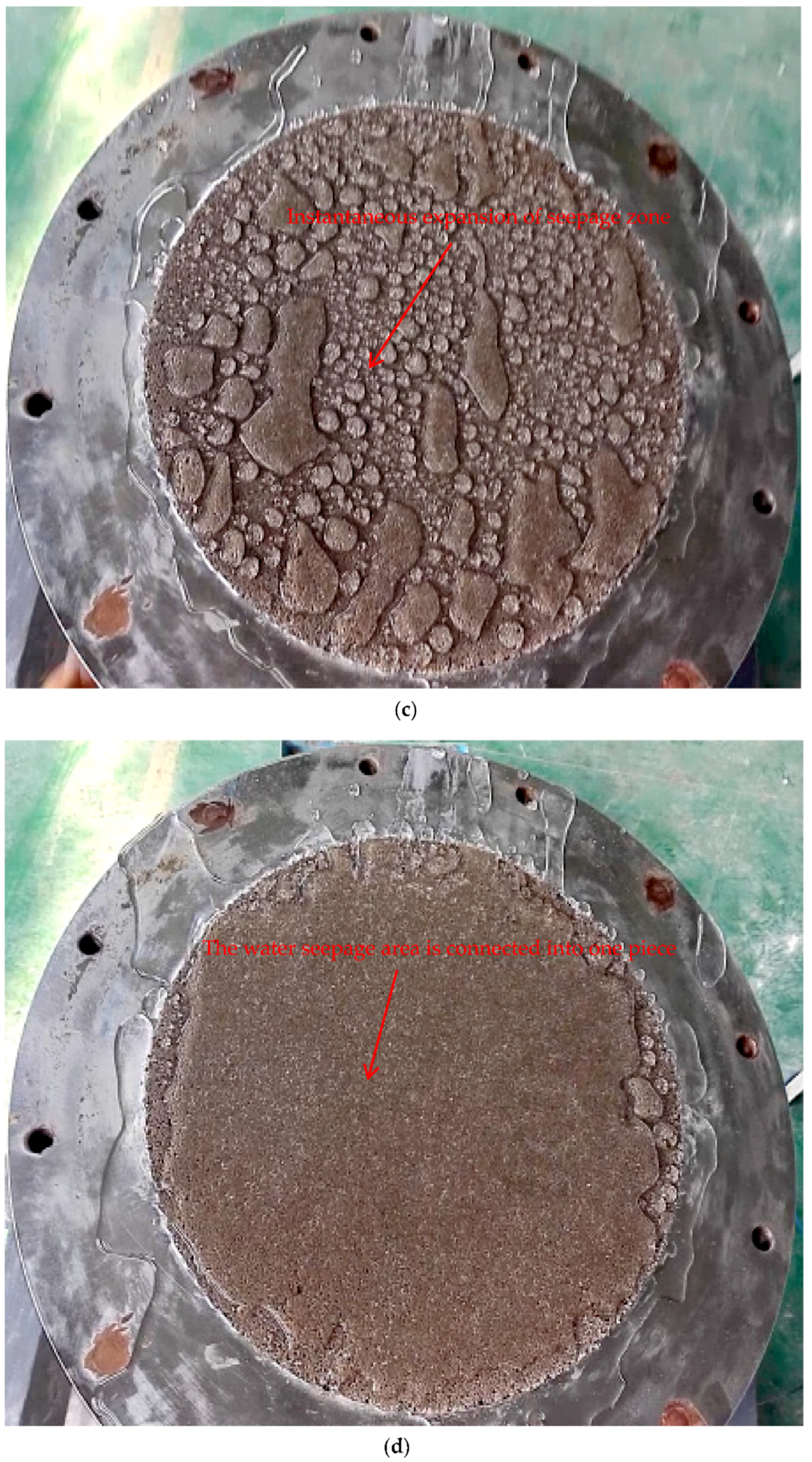
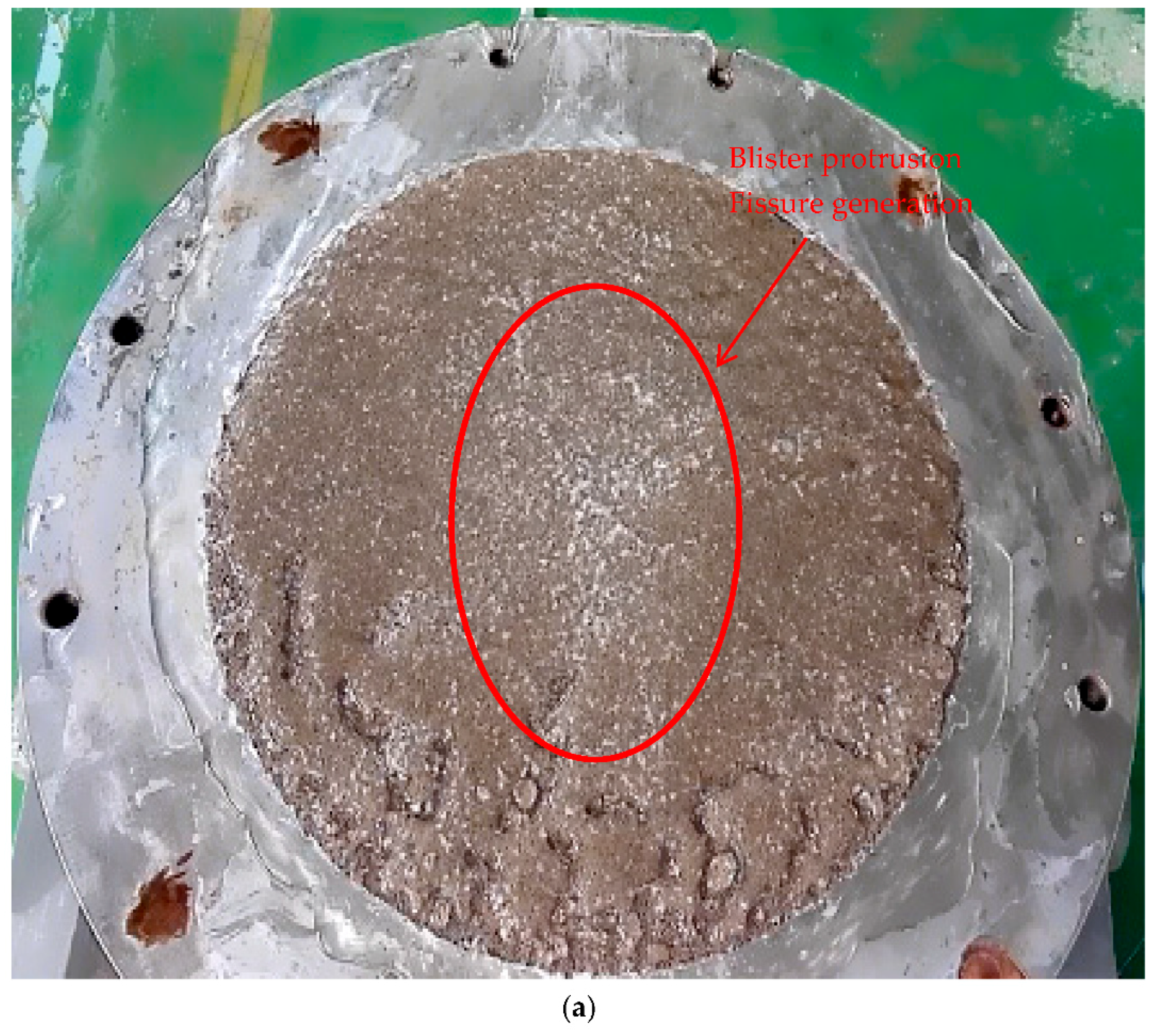
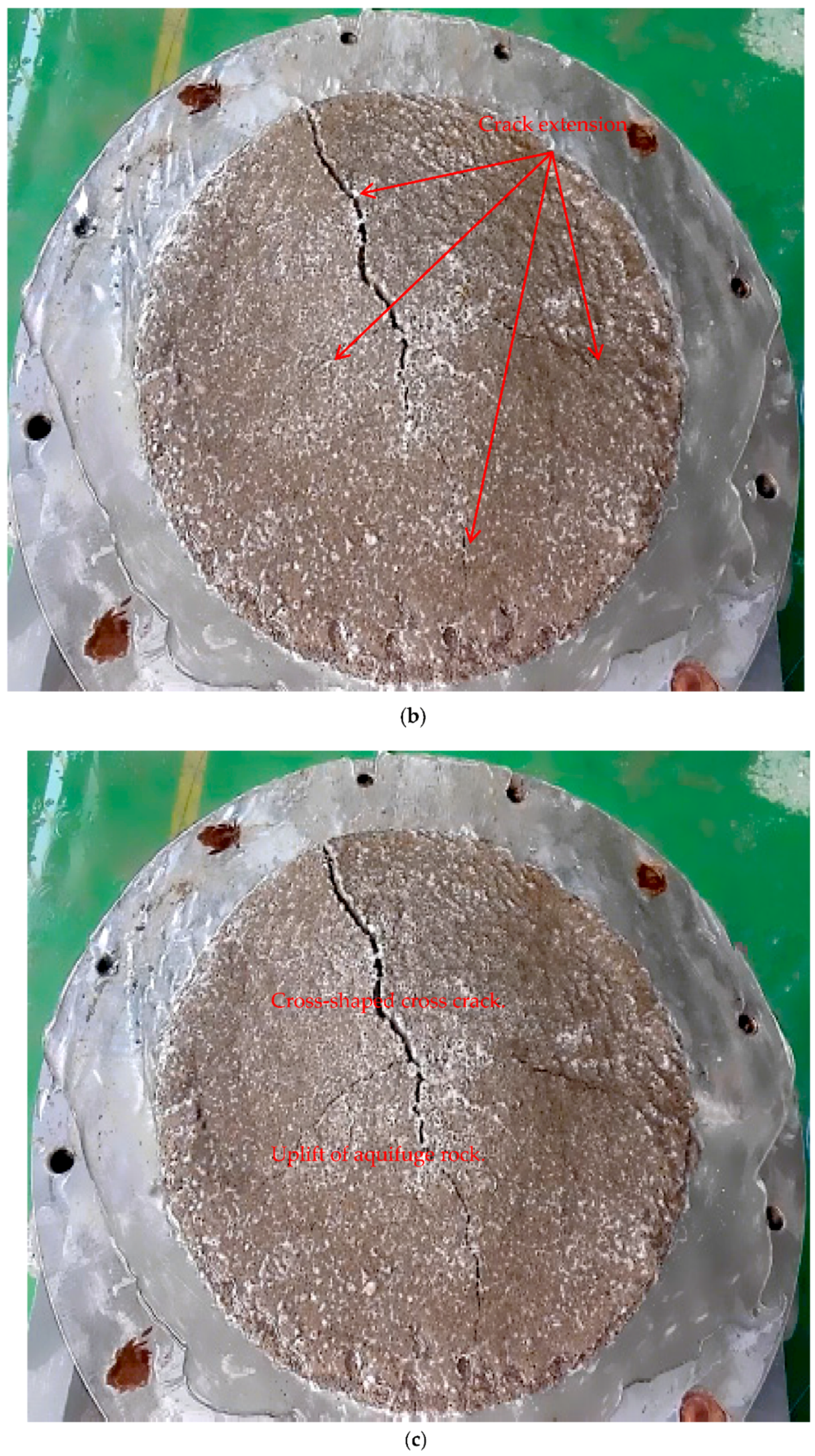
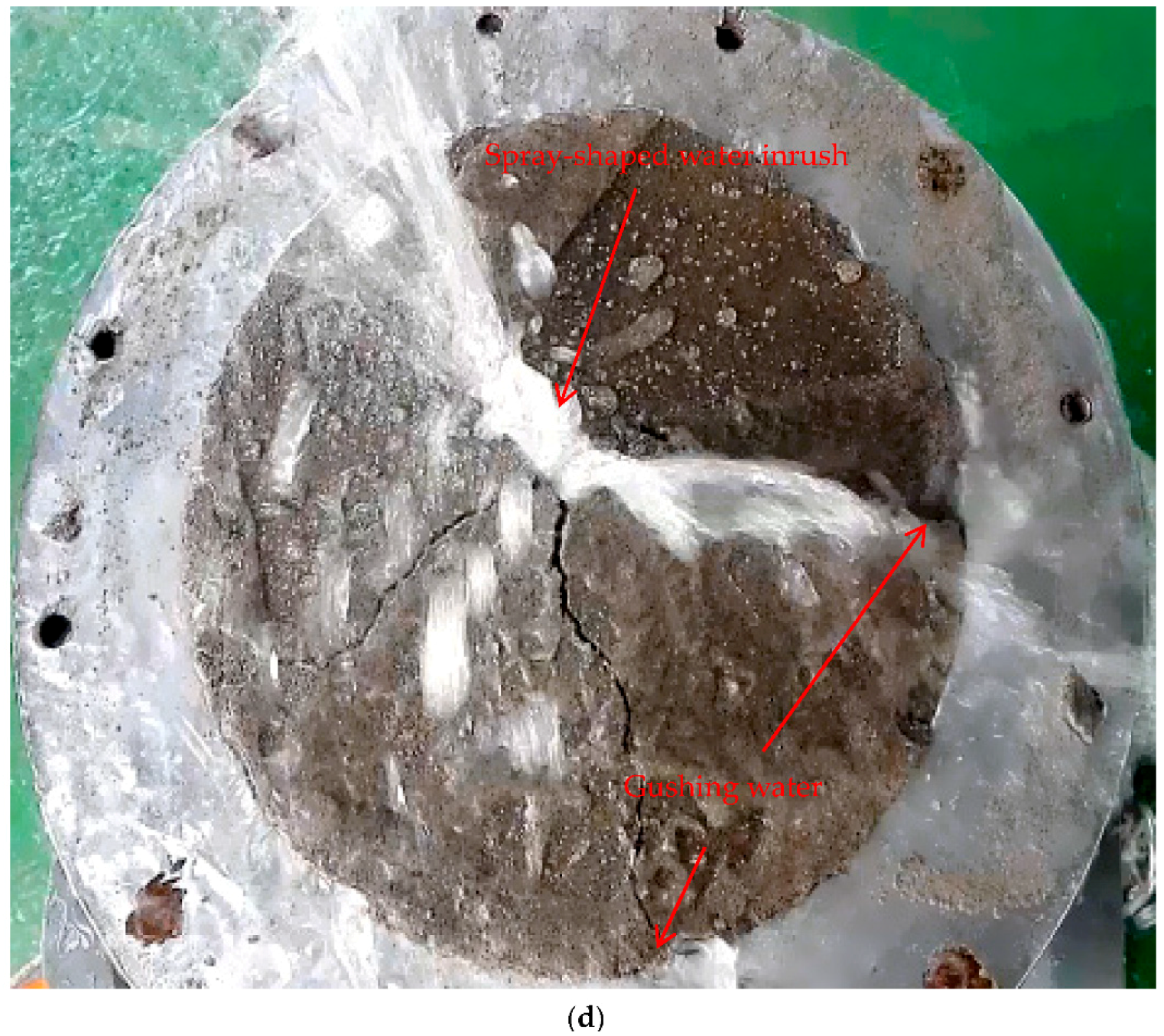

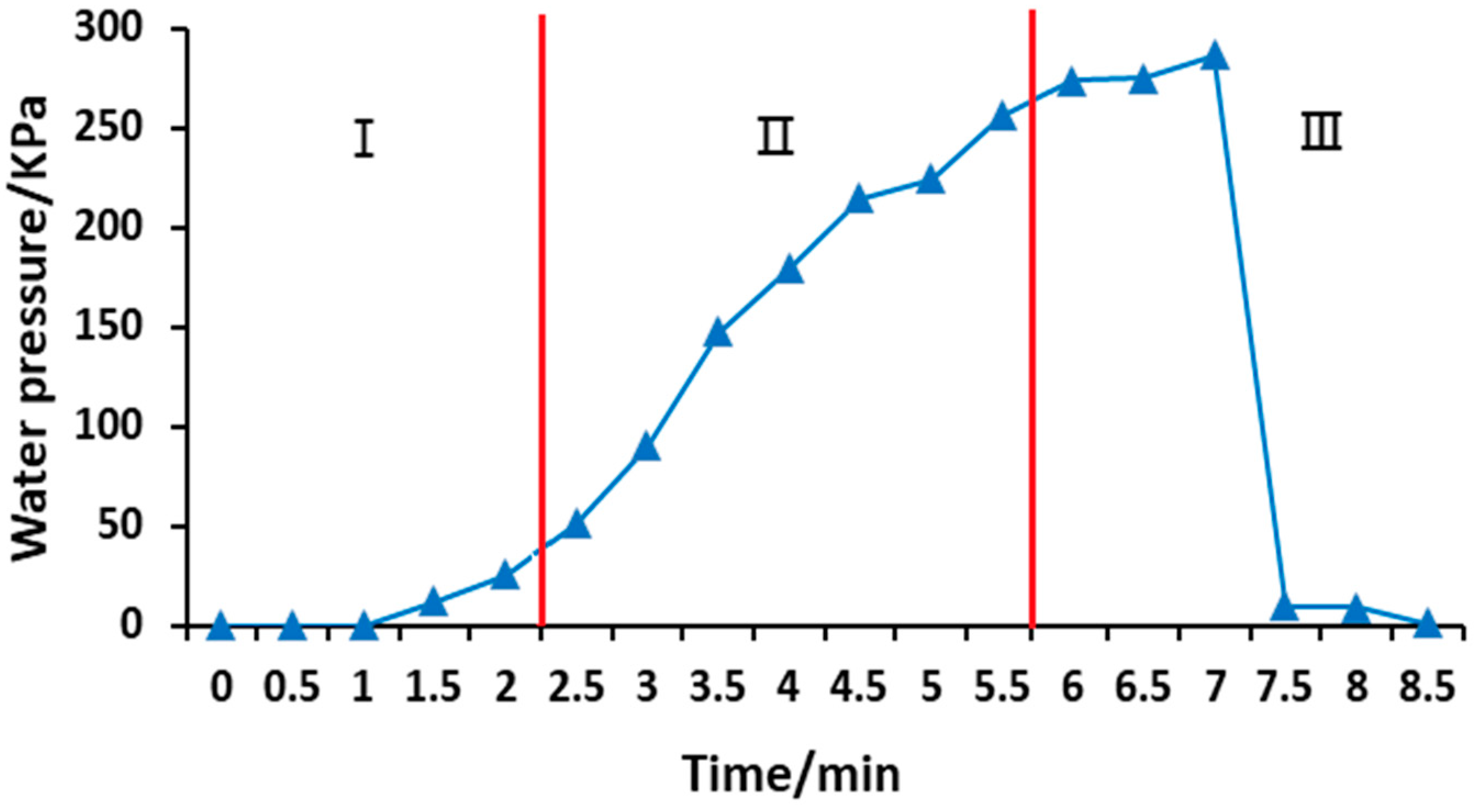
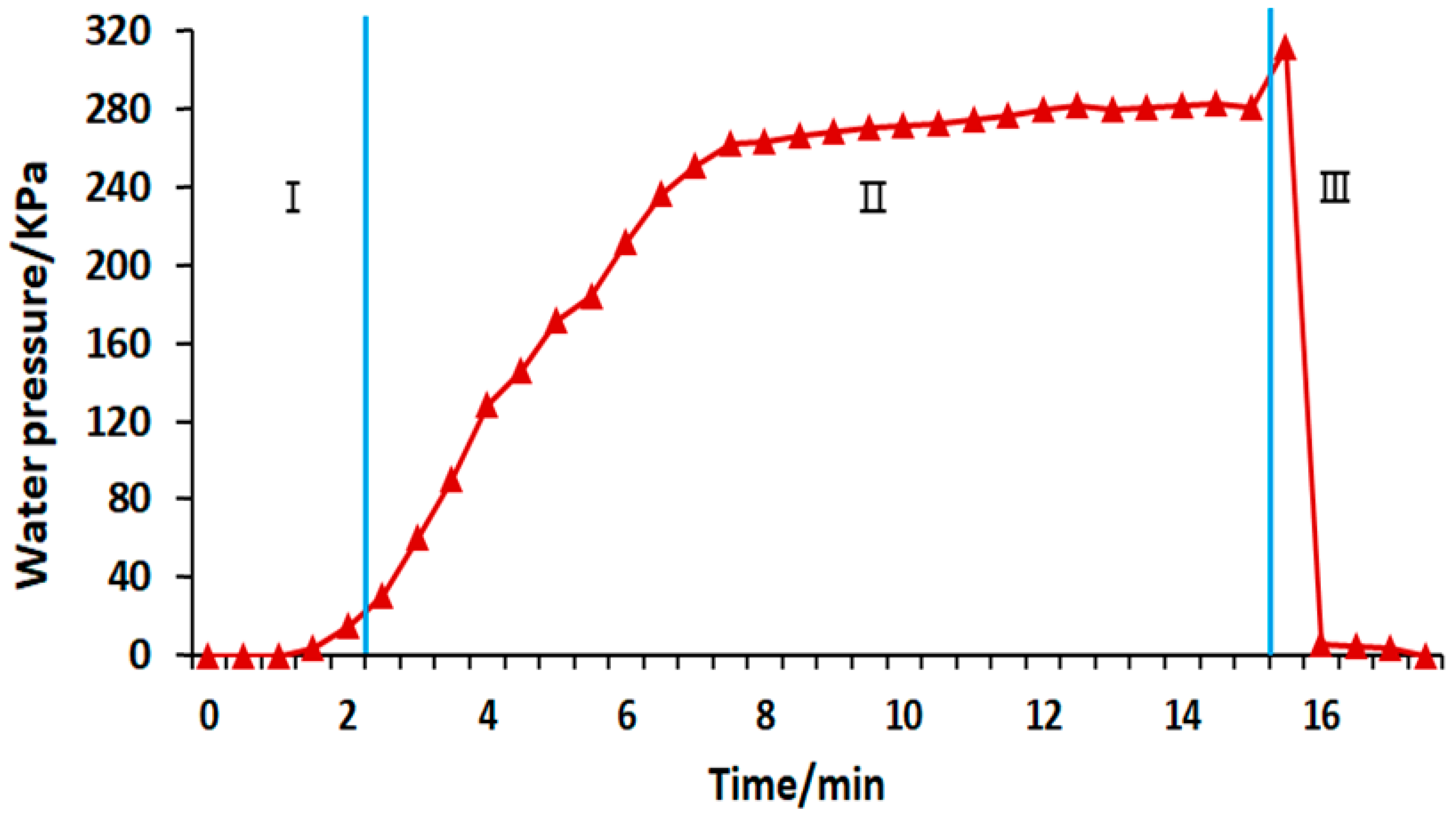
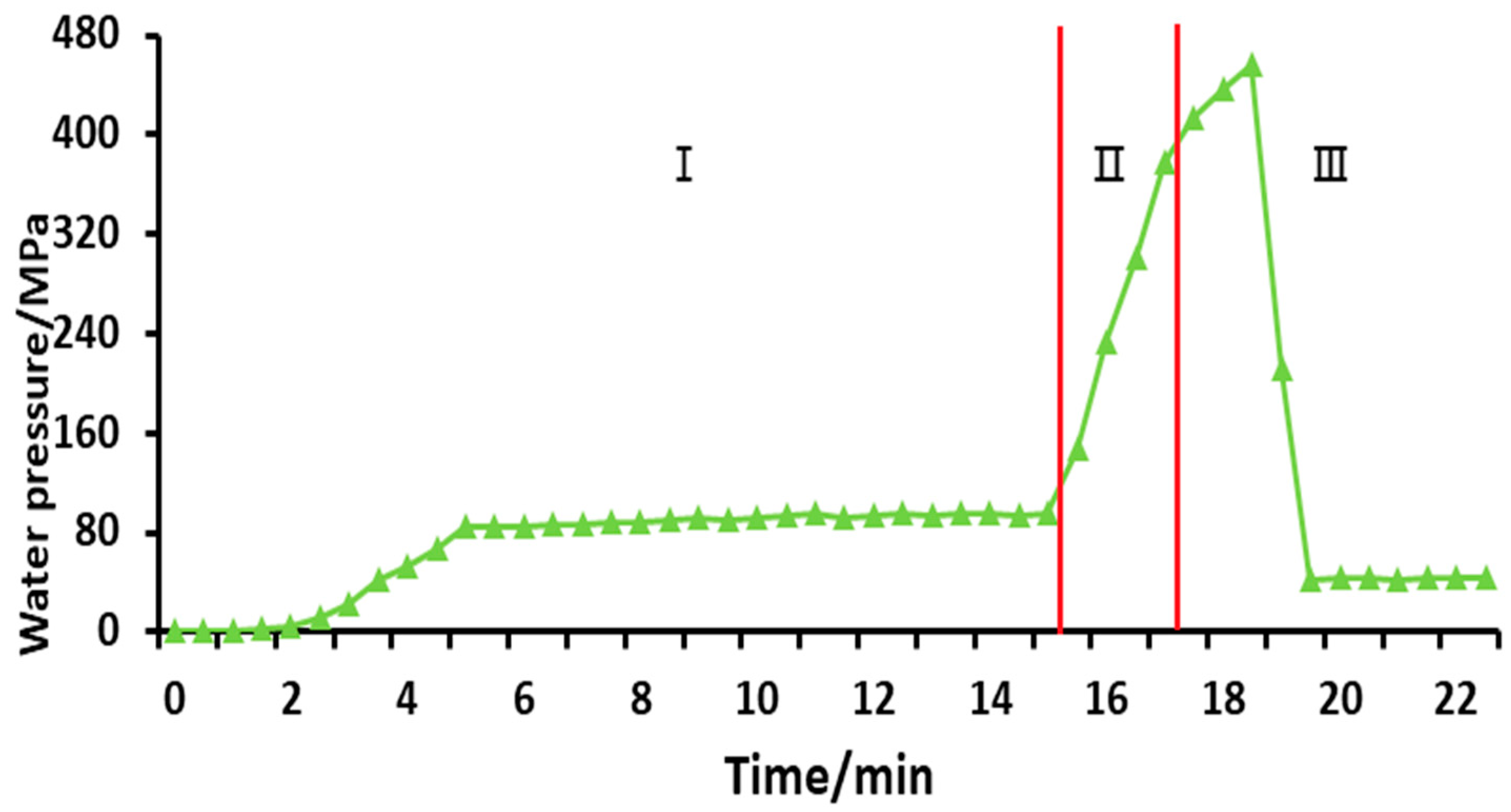
| Sand | Calcium Carbonate | Iron Powder | White Cement | Silicone Oil | Chlorinated Paraffin |
|---|---|---|---|---|---|
| 1 | 0.08 | 0.07 | 0.08 | 0.02 | 0.14 |
| Medium | Density (g/cm3) | Compressive Strength (MPa) | Elasticity Modulus (MPa) | Poisson Ratio |
|---|---|---|---|---|
| Similar material | 2.4 | 0.45 | 42.3 | 0.27 |
© 2018 by the authors. Licensee MDPI, Basel, Switzerland. This article is an open access article distributed under the terms and conditions of the Creative Commons Attribution (CC BY) license (http://creativecommons.org/licenses/by/4.0/).
Share and Cite
Yang, W.; Fang, Z.; Yang, X.; Shi, S.; Wang, J.; Wang, H.; Bu, L.; Li, L.; Zhou, Z.; Li, X. Experimental Study of Influence of Karst Aquifer on the Law of Water Inrush in Tunnels. Water 2018, 10, 1211. https://doi.org/10.3390/w10091211
Yang W, Fang Z, Yang X, Shi S, Wang J, Wang H, Bu L, Li L, Zhou Z, Li X. Experimental Study of Influence of Karst Aquifer on the Law of Water Inrush in Tunnels. Water. 2018; 10(9):1211. https://doi.org/10.3390/w10091211
Chicago/Turabian StyleYang, Weimin, Zhongdong Fang, Xin Yang, Shaoshuai Shi, Jing Wang, Hao Wang, Lin Bu, Liping Li, Zongqing Zhou, and Xueqing Li. 2018. "Experimental Study of Influence of Karst Aquifer on the Law of Water Inrush in Tunnels" Water 10, no. 9: 1211. https://doi.org/10.3390/w10091211
APA StyleYang, W., Fang, Z., Yang, X., Shi, S., Wang, J., Wang, H., Bu, L., Li, L., Zhou, Z., & Li, X. (2018). Experimental Study of Influence of Karst Aquifer on the Law of Water Inrush in Tunnels. Water, 10(9), 1211. https://doi.org/10.3390/w10091211









